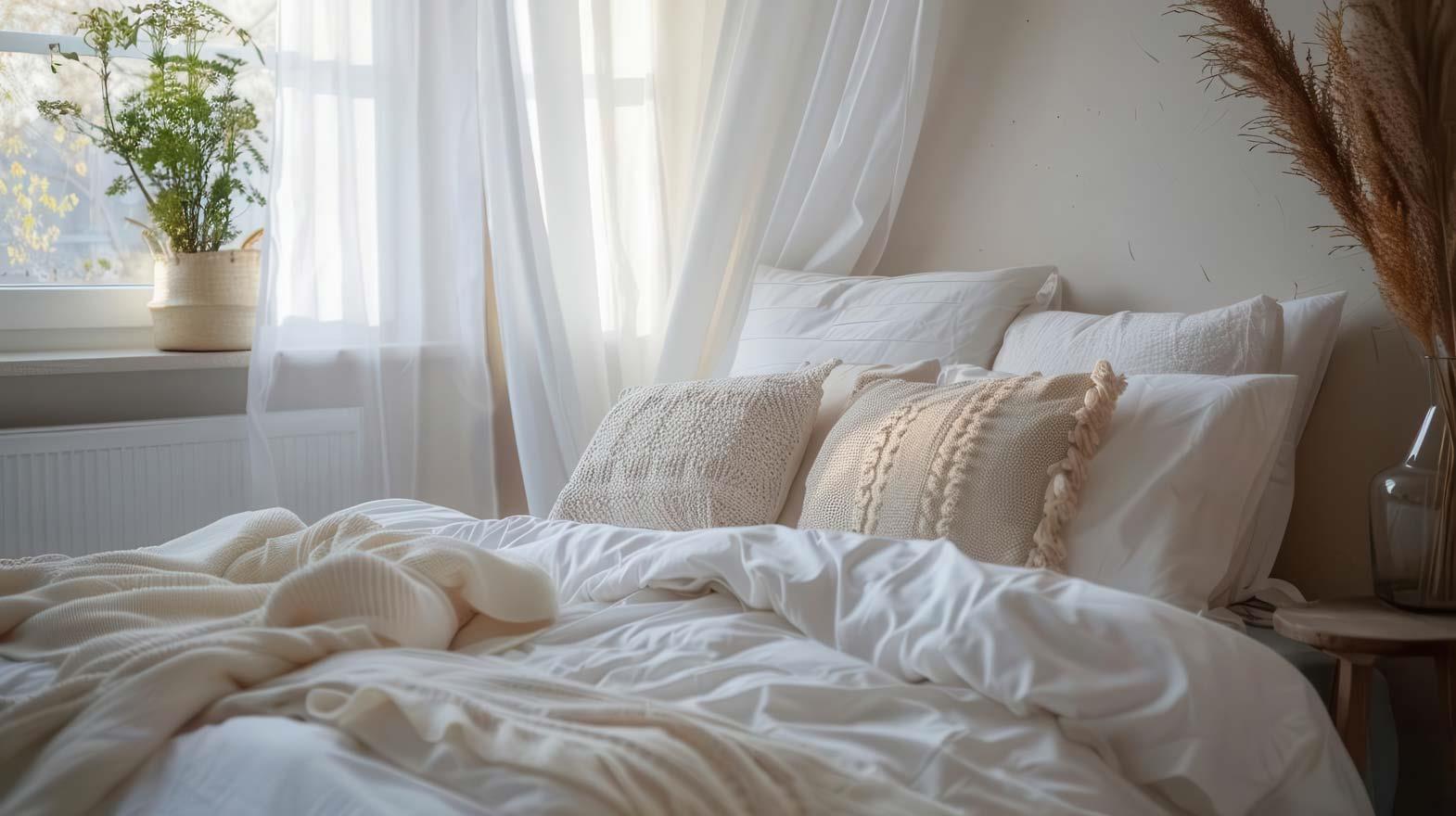Quilting refers either to the process of creating a quilt or to the sewing of two or more layers of material together to make a thicker padded material. The process of stitching the layers together is one of the parts of the quilting process. The other processes include designing, piecing, appliqu, binding, and other steps.
The most common quilting process involves three layers consisting of the top of the quilt or the top layer, batting or insulating material, and the last layer is the backing material. The rocking, straight, or running stitching style is used to sew the pieces together. The stitches can serve any purpose from being functional to decorative or elaborate. Quilting is capable of creating bed sets, clothing items, wall decorations or hangings, and other textile products.
Hand-quilting, machine quilting, and tying are the processes employed to create quilts. In hand-quilting, layers are stitched together using a needle and thread. A running stitch is sewn manually across the entire area that has to be quilted. A quilting frame can be used to keep the piece to be quilted away from the quilter's lap. Stab stitch is used by driving the needle through the fabric from the right side, then pushing it back up through the material from the left side. Also, the rocking stitch or loading the needle can be chosen. In the rocking stitch, quilters use a single hand on the top layer and cover a finger with a thimble; then the other hand, which is placed below the fabric, pushes the needle back up. Loading the needle requires doing four or more stitches before pulling the needle through the cloth. The hand quilting method is still practiced by some quilters in the United States and Canada and is under revival around other parts of the world.
Machine quilting uses a home sewing machine with which the layers are roughly tacked together prior to quilting. The quilt layers are laid out on an even surface and pinned together with large safety pins. There is also a longarm machine, in which the layers are placed on a frame containing bars. The layers are rolled on bars, thus canceling out the need for pinning the layers. Often professional sewing machines are used on a platform. The difference between the home sewing machine and the longarm machine is that a longarm machine is moved across the fabric, and in the sewing machine method, the fabric is moved through the machine. The longarm method is much simpler and faster than the home sewing machine.
Another technique is tying, wherein the three layers are fastened together. This is basically done on quilts that are made to be used and are needed quickly. The process of tying the quilt is done with yarns or multiple strands of threads. In order to ensure that the quilt's knots do not unfasten during washing, square or reef knots are commonly used to tie the layers.
Nevertheless, no matter what method is used to sew the quilts, it is important to use the right needle, as the wrong needle can lead to puckering, bumps, or even lead to the material being torn. Also, the colour, structure, and type of thread that is used play a crucial role in the outcome of the final quilt. The modern day quilters experiment with different designs from the archaic ones to the traditional ones and also the futuristic patterns. Patchwork is a popular type of quilt, in which, different colours and print fabric pieces are collected and then sewn together in a particular pattern. In some cases the individual fabric pieces collected for patchwork are sewn on a single ground fabric, while other times, the fabric pieces are stitched together without the ground fabric. There are also appliqu quilts that are created by cutting various shapes from a fabric and then these individual shapes are stitched on a backing fabric for an overall design. Appliqu has more natural appeal to its designs in comparison to patchwork. Appliqus are used to tell a story or express ideas, which are not possible through patchwork, as random geometric pieces of fabrics and designs are used in patchwork unlike the specific patterns carried in the appliqu.
There are also some common quilting designs that are popular all around the world. There is foundation piecing or paper-piecing which refers to sewing pieces of fabric onto a temporary or permanent foundation. Quilting which is credited to Hawaii is known as shadow or echo quilting. In this form, an appliqu piece is chosen and quilting is done all around it. The process of quilting is then repeated again and again around the previous quilting line. The Ralli quilting, which is Pakistani and Indian quilting, is often associated with the Sindh (Pakistan) and Gujarat (India) regions. There is also thread art that is a custom style of sewing where thread is layered to create the picture on the quilt. The diamond in the square is a common quilt block, snowball blocks is a classic quilt block pattern and quilt block called the hourglass block is also popular. Mostly cotton fabric is used for top layer and the backing material in quilts, but quilts in blended silk and satins are also common.
Apart from warding off the cold, quilts also serve as a flexible element of interior design and they reflect the creativity of the makers. It is for this reason that the quilts are not confined to any single region of the world; they are popular in all parts of the globe, but the preferences of locals dictate the designs, colours and patterns of the quilts.
References:
1. Wikipedia.com
2. About.com
3. Worldquilts.quiltstudy.org
4. Keepsakequilting.com
5. Qualitymatters.aspx








Comments